Bolivia’s reputation for authentically festive, exhilarating, and meaningful holidays precedes it. Of course, these include familiar global holidays, such as Christmas. But also, there are so many unique national holidays in Bolivia that involve a syncretic history, blending Catholic ideology lingering from the Spanish conquest with pre-Hispanic beliefs and customs.
In this article, we want to share with you four hyper-local Bolivian festivals and holidays you most likely have never heard of and might just be compelled to experience for yourself on your next trip to Bolivia!
1. Fiesta de Ekeko (Aka Fiesta de las Alasitas)
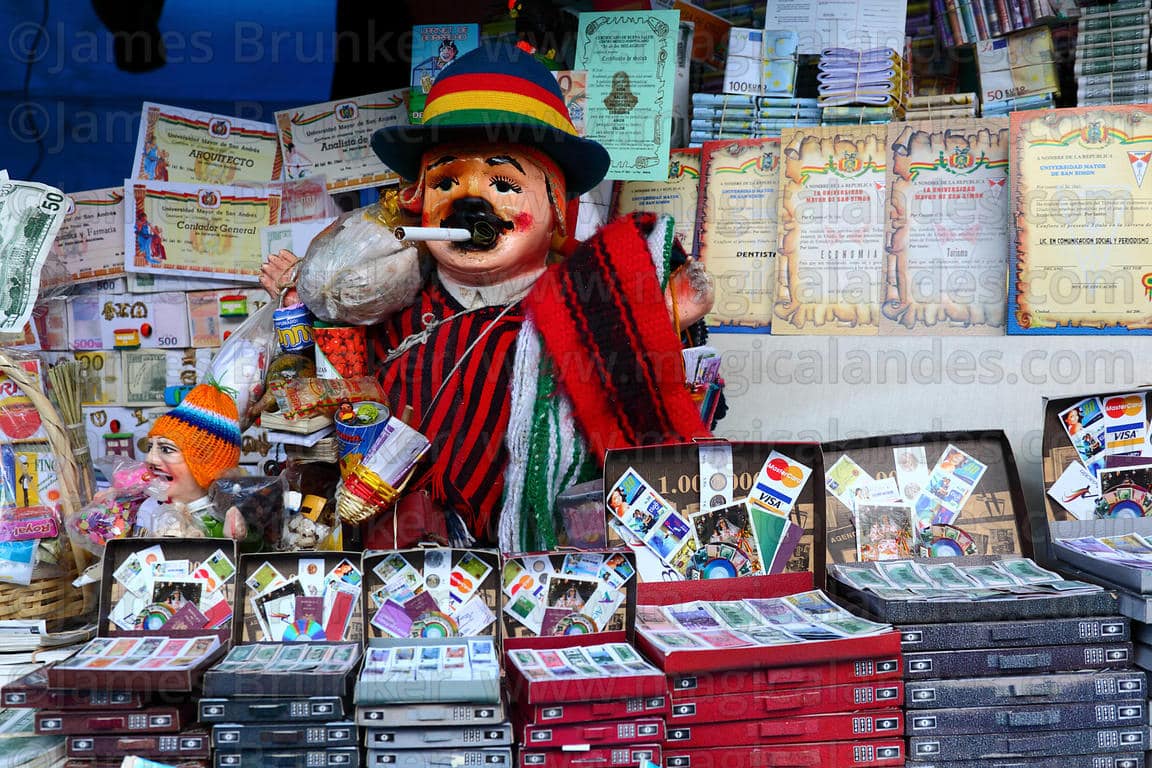
Photographer and Copyright: James Brunker http://www.magicalandes.com
Oh, the miniatures! From the most intricate to the most adorable, you will find them on full display during this famous street fair the last week of January in Bolivia, and more specifically in the cities of La Paz or Al Alto, where this holiday is most fervently observed. Essentially, the Ekeko deity is the Bolivian God of Abundance, and this holiday is dedicated to him.
Thousands of people make the pilgrimage to La Paz on or before January 24th to make sure they purchase the miniature replicas of their desires for the coming year. Some of these replicas include the Ekeko himself, with outstretched arms carrying the symbolic abundance to come. Finally, a shaman blesses these figures and miniature models with alcohol, rose petals, and tobacco smoke.
2. Fiesta de la Virgen de Candelaria
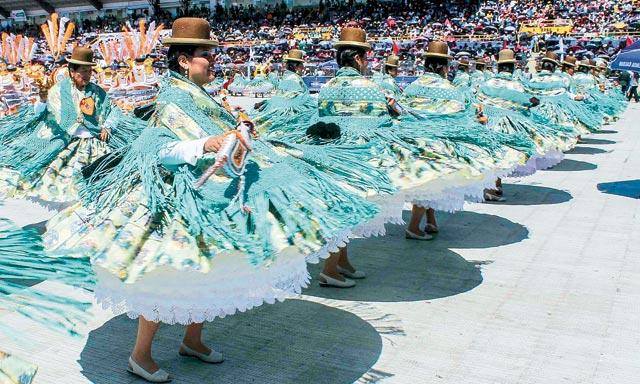
CC: Diario La Republica
Copacabana, Bolivia, shares this next festival with Puno, Peru, across a shared body of water, which happens to be the world’s highest Navigable Lake, Lake Titicaca. Every year at the beginning of February, people line Copacabana’s streets to pay homage to Bolivia’s most sacred Virgen figure, La Virgen de Candelaria (aka “Our Lady of Copacabana).
According to local folklore, the Virgen de Candelaria is a savior to all fishermen caught in dreadful storms on Lake Titicaca. They pay homage to her, and her effigy, for three days in February with pomp and circumstance quite unlike any other. Masked dancers twirl, entranced by the musicians playing steadily behind them, as the beer flows through the surrounding crowds of tourists and locals alike.
3. Carnaval de Oruro
Depending on the country and city (from Brazil to Peru, to New Orleans, to Bolivia, and countless more), Carnaval (Carnival in English) celebrations have a glorious run from late January to mid-late February. In Bolivia, Carnaval means an off-and-on, soaking wet, foam-filled dance party pretty much lasting this entire period. However, one of the most coveted, unique, and world-renowned Carnaval celebrations in Bolivia occurs in the small but lively city of Oruro.
The festival’s main action happens either the last week of February, or even the first week of March, depending on the year, and lasts for four fun-filled days. It is essentially a non-stop technicolor parade with both Catholic and indigenous figures reincarnated in intricately masked dancers.
4. Día de la descolonización
As of 2009, with Evo Morales’ administration, Bolivia’s official name became the “Plurinational State of Bolivia.” Morales made this significant change to the country’s name and constitution to officially recognize the impressive multicultural identity of 36 distinct cultural identities within Bolivia.
Therefore, Bolivians have also designated October 12th as a national holiday, called Día de la Descolonización (Decolonization Day). Essentially, this is a day to honor and celebrate Bolivia’s extremely vibrant indigenous communities whole-heartedly, and remember the 500-yearlong resistance, struggle, and eventual victory against a brutal colonial invasion starting with Colombus on October 12th, 1492.
5. Wallunk’a
One month later, Bolivians celebrate Wallunk’a, which coincides with All Saints Day and Day of the Dead. And Wallunk’a is an interesting Bolivian take on the Day of the Dead, where the living world becomes one with the spirit world; however, love, seduction, and matchmaking also play a role in this particular celebration.
During the first week of November, women take over each town square dressed in traditional indigenous fare and mount giant swings that have been constructed for the occasion. The swings represent the tenuous tunnel between the two worlds and a gateway for young Peruvian men and women to find their life partner.
If you want to know more about these multi-faced holidays celebrated in Bolivia and how to incorporate one into your once-in-a-lifetime journey to Bolivia, contact us!

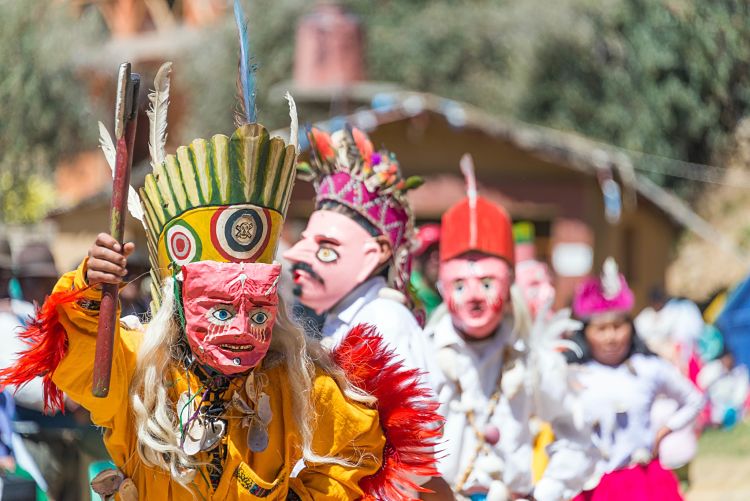
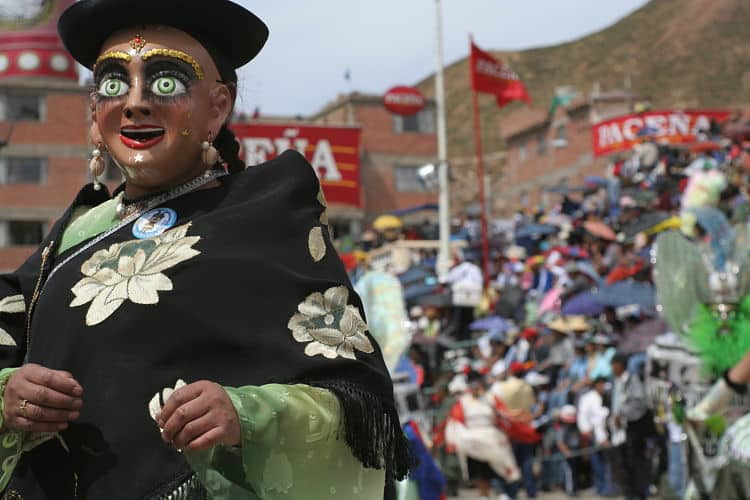
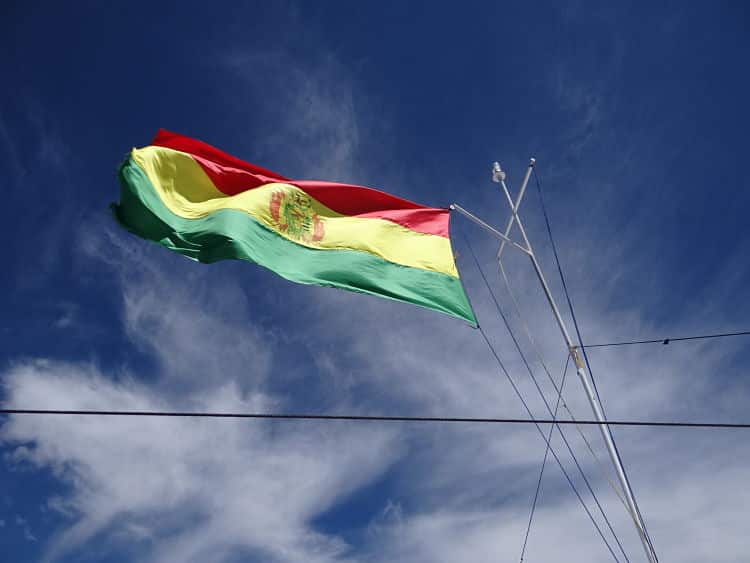
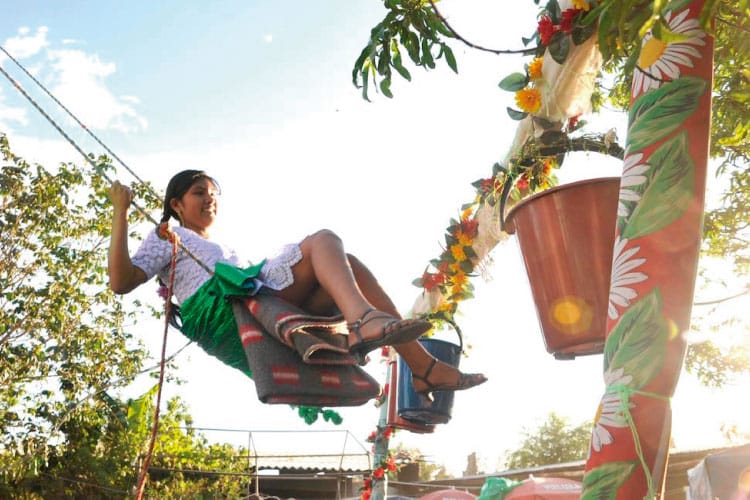

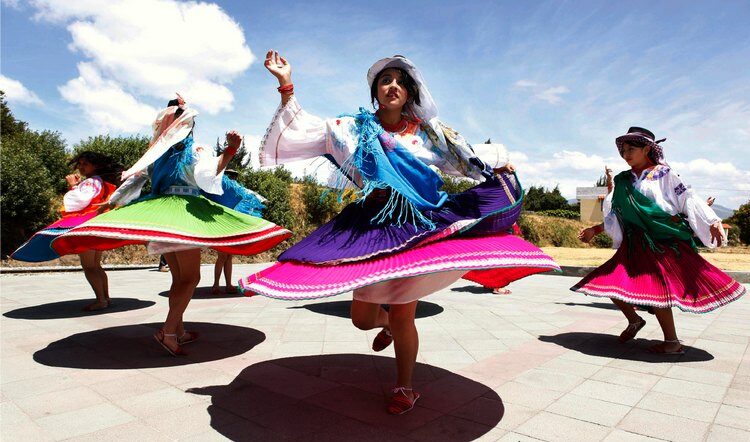
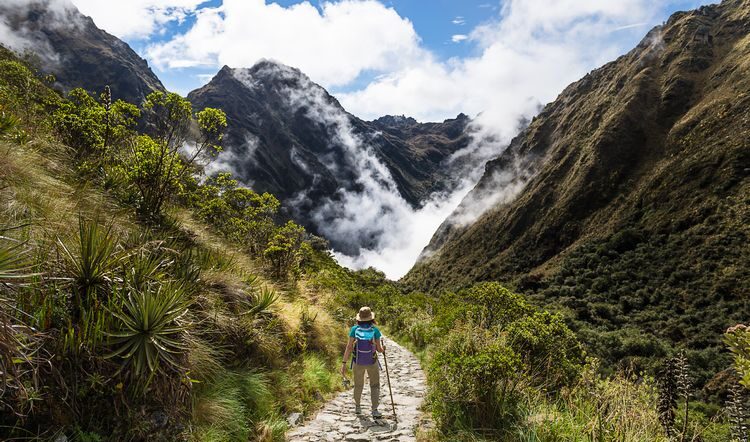
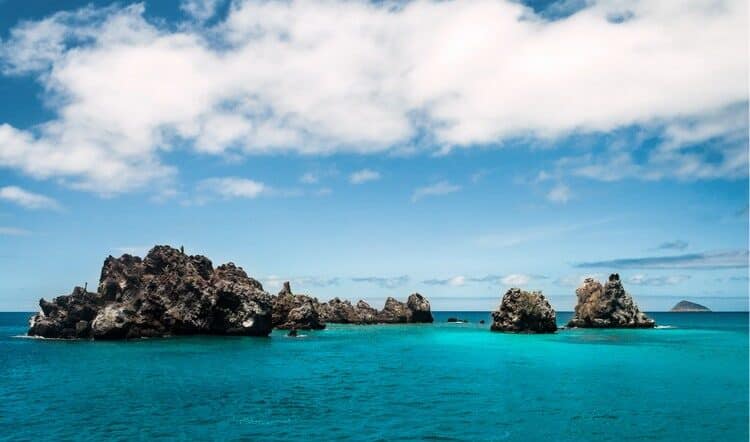
Leave a Comment